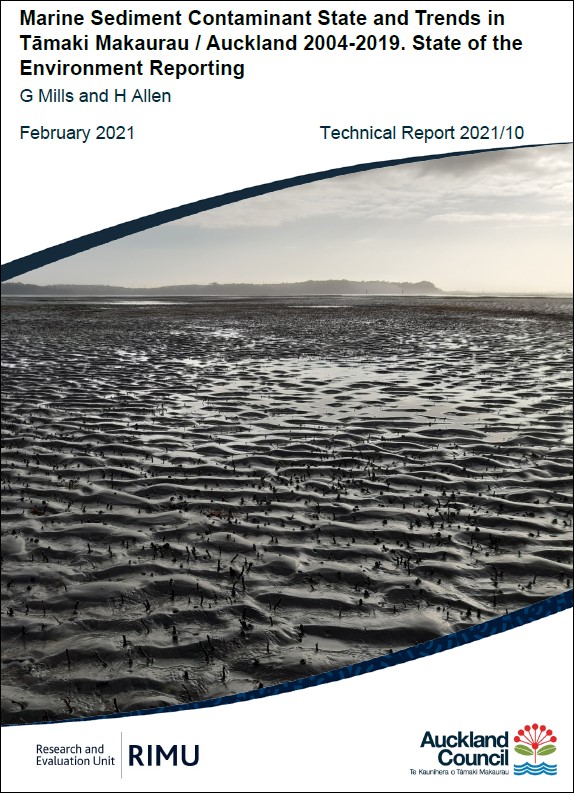Marine sediment contaminant state and trends in Tāmaki Makaurau / Auckland 2004-2019
Author:
Geoff Mills, Hamish Allen, Diffuse Sources LtdSource:
Auckland Council Research and Evaluation Unit, RIMUPublication date:
2021Topics:
EnvironmentExtract from the executive summary
Estuarine sediments can accumulate chemical contaminants originating from land-based activities. Sediment contamination therefore provides a useful marker of land use impacts on aquatic receiving environments. In addition, the build-up of contaminants can cause changes in the ecological health of an estuary by reducing the abundance or diversity of sensitive species, leaving degraded communities dominated by species that are tolerant of higher contaminant concentrations. Understanding the distribution of chemical contaminants in marine sediments, their potential effects on aquatic ecology, and trends in chemical contamination over time, is therefore important for effective resource management of coastal areas.
Auckland Council monitors contaminants in marine sediments at approximately 120 sites in the Regional Sediment Contaminant Monitoring Programme (RSCMP). The RSCMP data complement those obtained in other Auckland Council programmes (e.g. coastal water quality and benthic ecology), which together aim to provide consistent, long-term information on the quality of Auckland’s coastal environment. This monitoring is carried out as part of fulfilling Auckland Council’s obligations under the Resource Management Act 1991. Information gained is used to identify issues and inform policy development and environmental decision-making.
This report covers the period 2004 to 2019 (inclusive) and includes assessment of chemical contaminant ‘state’ in Auckland’s estuaries and harbours, spatial patterns of sediment contamination, and the potential impacts of this contamination on benthic ecosystem health. Temporal trends in contaminant concentrations between 2004 and 2019 have also been assessed, focusing on changes over time in the heavy metals copper (Cu), lead (Pb), and zinc (Zn). Previous state and trends analysis of marine sediment contaminants published in 2012, found that the highest contaminant concentrations are generally located in the muddy upper reaches of estuaries receiving run-off from older, intensively urbanised and/or industrialised catchments, particularly in the Tāmaki Estuary and Central Waitematā Harbour. The lowest concentrations were found in rural/forested catchment estuaries and open coastal beaches. In general, this report agrees with those earlier findings, with a similar spatial distribution and level of contamination observed. ...
Auckland Council technical report, TR2021/10
Published February 2021.
See also
Auckland Council's State of the environment report 2020
The health of Tāmaki Makaurau / Auckland’s natural environment in 2020
